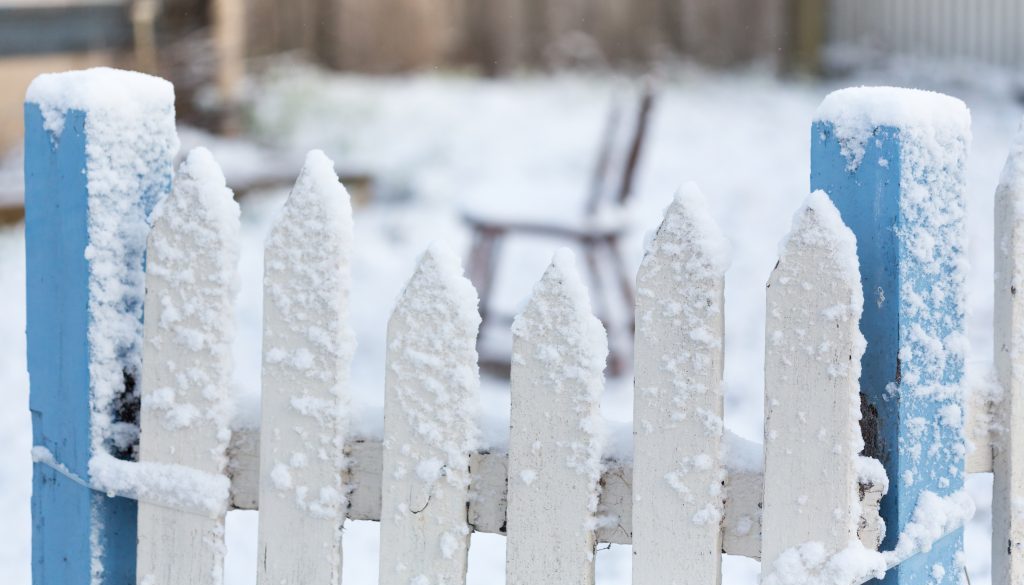Prepare for Winter Arlington Heights
How to Prepare Your Fence for the Upcoming Winter
We’ve officially reached the end of summer and begun fall, and that means it’s time for pumpkin spice lattes, cozy sweaters, and spooky decorations. It’s also time to begin preparing your yard for fall and winter weather. If you have a fence, it’s necessary to ensure that it will continue to survive throughout the changing seasons. Your fence made it through the heat and sunlight, but can it handle the colder temperatures and snow? Here are some tips for inspecting your fence before fall and winter and making sure it remains standing even after the heaviest snowfall.
Inspecting Your Fence for Signs of Damage
The first step to making sure your fence is ready for winter is to give it a quick inspection. How do the fence posts look? If you see any sign of sagging, you should do something about it. Don’t procrastinate when it comes to fence maintenance – you wouldn’t want your pet or your kids to get poked by a rusty nail that they didn’t see sticking out of your rundown fence, after all!
There’s a lot more risk of trouble with a wood fence than with a vinyl fence. If your wooden fence is showing signs of rot due to summer rainfall, this is something to address before the weather turns cold and dark. After all, winter is coming. Check that your fence posts are structurally sound and that none of your boards are loose or damaged. If your only problem is one missing or damaged board, you may be able to repair the fence. A rusty latch on your gate may also need replacement, which is a problem you might encounter with either wood or vinyl. However, if you see any signs of rot, this is a good reason to tear down that old fence and put up a new one.
Signs of Rot include:
Boards caving in
Posts are loose and wobbly
Gate sag and wont close
In addition to the moisture of snow, which can cause damage to wooden fences especially, you need to consider whether your fence can take the weight of snow. In a heavy snowfall, vinyl fences are usually sturdy because they do not rot in the first place and are less likely to warp. Aluminum fences also withstand snow well.
Protecting Your Fence from Moisture
Protecting a Wood Fence
If your wood fence isn’t showing signs of rot, then it’s likely to last another season. However, you should make sure that it has been waterproofed and will not be at risk for rot in the future. Vinyl fences are already waterproof. To check that your wood fence has been properly waterproofed, you can perform a “splash test” by splashing water onto the fence. If it beads up, you’re good to go. However, if the water gets absorbed and darkens the wood, you will need to apply a layer of sealant or waterproof stain. Make sure you’re using a high-quality brand; if you skimp on the coating, you may end up having to repair or repaint your fence, and the cost will be much greater in the long term.
Keeping Leaves and Snow Away From Your Fence
Raking leaves is one of the first chores that comes to mind when thinking of fall yard work. Make sure you have a place to rake leaves that is not against your fence. When it rains, leaves collect moisture, which can mean trouble for your fence, especially if it’s made of wood. Vinyl fences will not rot from water damage the way wood fences may. However, algae is still more likely to grow on a vinyl fence that gets wet, which is particularly noticeable if your fence is white or light-colored. Therefore, you don’t want to create piles of leaves right next to your fence, where over time they may also get wedged between fence boards.
As you know, if you don’t take care of your leaves now while the October weather is still mild, you’re regret it later. Snow piling up on your leaves will only make the moisture problem worse and put you at further risk for mold, mildew, and rot. The weight of snow can also cause the collapse of your fence over time. Therefore, it’s a good idea to shovel as much snow off your fence as you can.
Pressed on Vinyl
You might have a vinyl fence instead of a wooden one. If you do, then that’s perfectly fine. You’ll just have to care for it a different way. Clean off any mold, mildew, or algae you see growing on your vinyl fence. Also, be sure to shovel off as much snow as you can to help prevent from boards snapping under the weight.
Don’t Forget About Gates
The gates that are part of your fences will need attention too. One vital part of the gates that help open and close them are the hinges. Make sure you find the time to grease the hinges and keep them moving – you don\’t want to get stuck on the wrong side of your fence in a snowstorm just because the gates around your home won’t swing enough to let you through.
Taking these measures for preparation and maintenance will ensure that your fence will last for seasons and years to come and that you’ll get lots of enjoyment out of it. If you find yourself in need of a new fence, you’ll want to get this project out of the way before the weather turns. If you had a wood fence that you were unable to properly maintain, you may want to consider vinyl or aluminum next time, which requires less upkeep and may fit into your busy life better. Like it or not, we are in store for colder weather, but if your fence is in pristine condition, it will make a beautiful backdrop for snow and fallen leaves!


